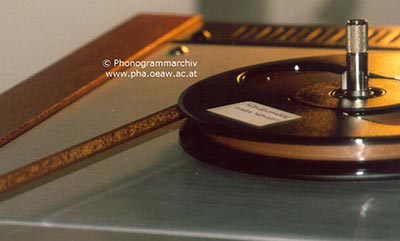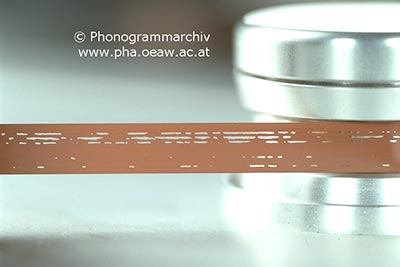| Table of Contents |
|---|
...
Physical Characteristics
...
| Tape width | ¼ inch (6.35mm) |
|---|---|
| Tape composition | Metal evaporate (ME) |
| Cassette dimensions | 2 9/16" x 1 7/8" x 7/16" |
| Container dimensions | 2 7/8" x 2" x 5/8" |
| Identifying features | Sony MiniDV cassettes are usually labeled in the lower left hand corner Panasonic MiniDV cassettes are usually labeled with a sticker on the right side |
| Common manufacturers/brands | Sony, Panasonic, JVC |
| Playback |
|
...
| Record time | Standard play: 60 - 80 minutes Long play: 90 - 120 minutes |
|---|---|
| Record/playback speed | Standard play mode: 18.81 mm/sec |
| Track pitch | Standard play: 10 microns Long play: 6.7 microns |
| Track width | Standard play: 10 microns Long play: 6.7 microns |
| Bitrate | 25 Mbit/s |
| Bit depth | 8 bit |
| Colour sampling | PAL: 4:2:0 NTSC: 4:1:1 |
| Resolution | PAL: 720x576 |
| Compression | 5:1 DVC-format DCT compression (intra-frame) |
...
Types of damage and deterioration
...
Binder deterioration
| Info | ||
|---|---|---|
| ||
"1.1.3. Inspect for damage / Look for chemical deterioration / Binder degradation". In Audio Tape Digitisation Workflow. Accessed February 22, 2021. |
Description
Commonly known as "sticky shed syndrome." Affected records will have a visible gummy or powdery residue on the surface of the tape. This can damage both the recorded material and playback equipment. Back-coated tapes are most affected by this type of deterioration.
...
Baking: Holding the tape at an elevated temperature (45°C to 55°C) for a brief period of time (up to 36 hours) can temporarily remove moisture and allow normal playback for a period of one to two weeks. Tapes should not be rewound before baking.
Drop-out
https://www.musiikkiarkisto.fi/audio/audio113.html
| Info | ||
|---|---|---|
| ||
"1.1.3. Inspect for damage / Look for chemical deterioration / Binder degradation". In Audio Tape Digitisation Workflow. Accessed February 22, 2021. |
Description
A brief signal loss caused by a tape head clog, missing magnetic oxide particles, tape defect, or debris on the tape or machine. These factors can reduce head-to-tape spacing and result in the appearance of white spots or streaks on playback. Multiple drop-outs per frame will result in a snowy appearance.
...
Visit the /wiki/spaces/ALC/overview for further reading on /wiki/spaces/ALC/pages/1891631115.
Sources
...
AMIA. "Video Preservation Factsheets." Accessed December 10, 2020.
Bensinger, Charles. "Chapter 6: All about videotape." In The Video Guide, Second Edition, 71-75. Santa Barbara, California: Video-Info Publications, 1981.
Bogart, John Van. "What Can Go Wrong With Magnetic Media?" In Magnetic Tape Storage and Handling: A Guide for Libraries and Archives. Washington, DC: The Commission on Preservation and Access, 1995.
Casey, Mike. "FACET: Format characteristics and preservation problems." Bloomington, IN: Indiana University, 2007.
Gibson, Gerald. D. "Magnetic tape deterioration: recognition, recovery and prevention." Paper presented at the IASA Conference, Perugia, August 26, 1996.
Jimenez, Mona and Liss Platt. "Videotape Identification and Assessment Guide." Texas Commission on the Arts. 2004.
MediaCollege.com. "The MiniDV Format." Accessed February 3, 2021.
Museum of Obsolete Media. "MiniDV (1995 – late 2000s)." Accessed February 3, 2021.
Nielsen, Rebecca. "Media Recognition: DV Part 1." Bodleian Libraries. March 26, 2012.
Preservation Self Assessment Program. "Videotape: MiniDV." University of Illinois at Urbana-Champaign. Accessed February 3, 2021.
WDVA. "Do DV Formats Mystify You?" 2004.
Wheeler, Jim. "Videotape preservation handbook." 2002.
Wilt, Adam J. "The DV, DVCAM & DVCPRO Formats: The DV formats tabulated." August 28, 2005.
Version history
...
| Version | Date | Author(s) | Version Notes |
|---|---|---|---|
...

